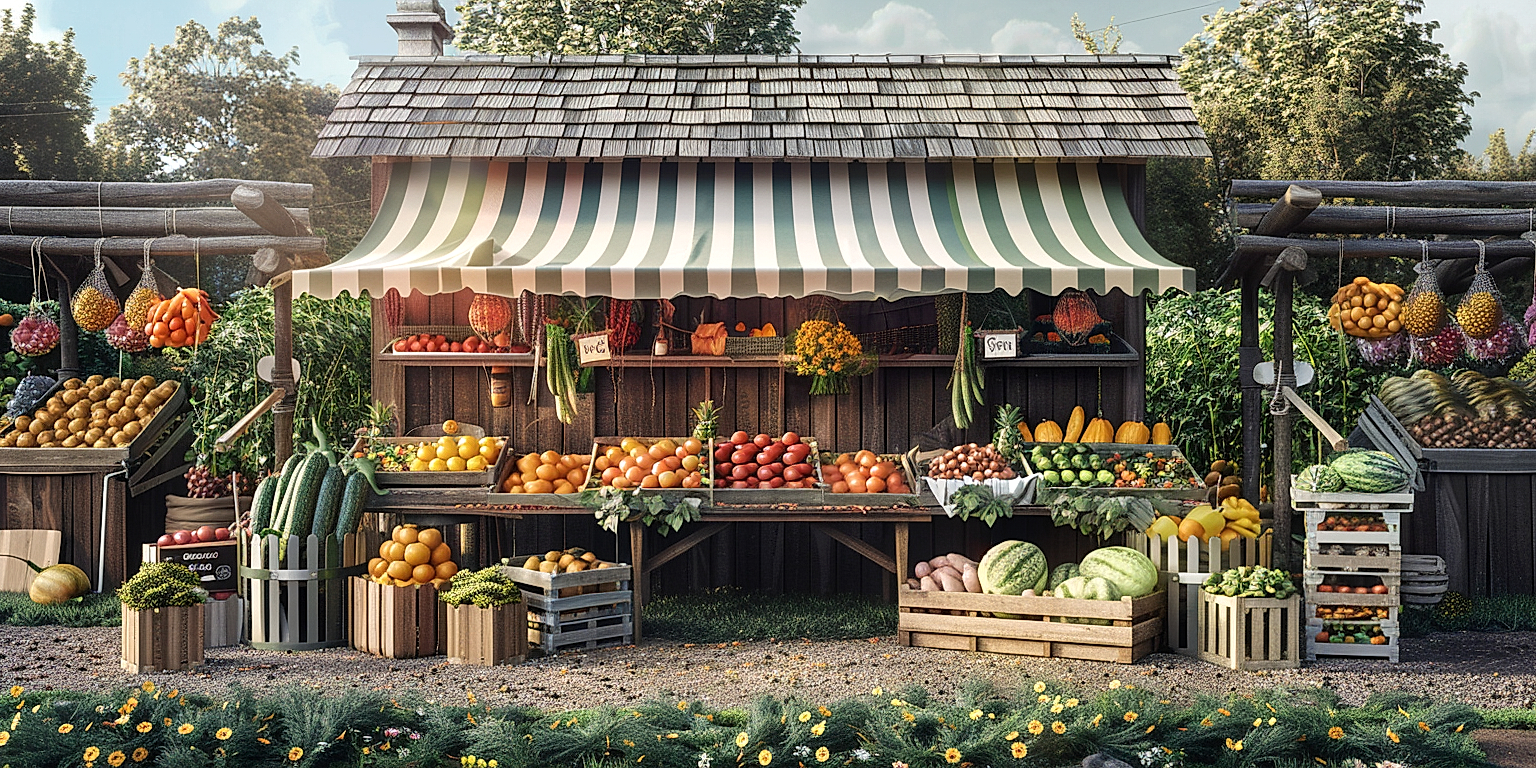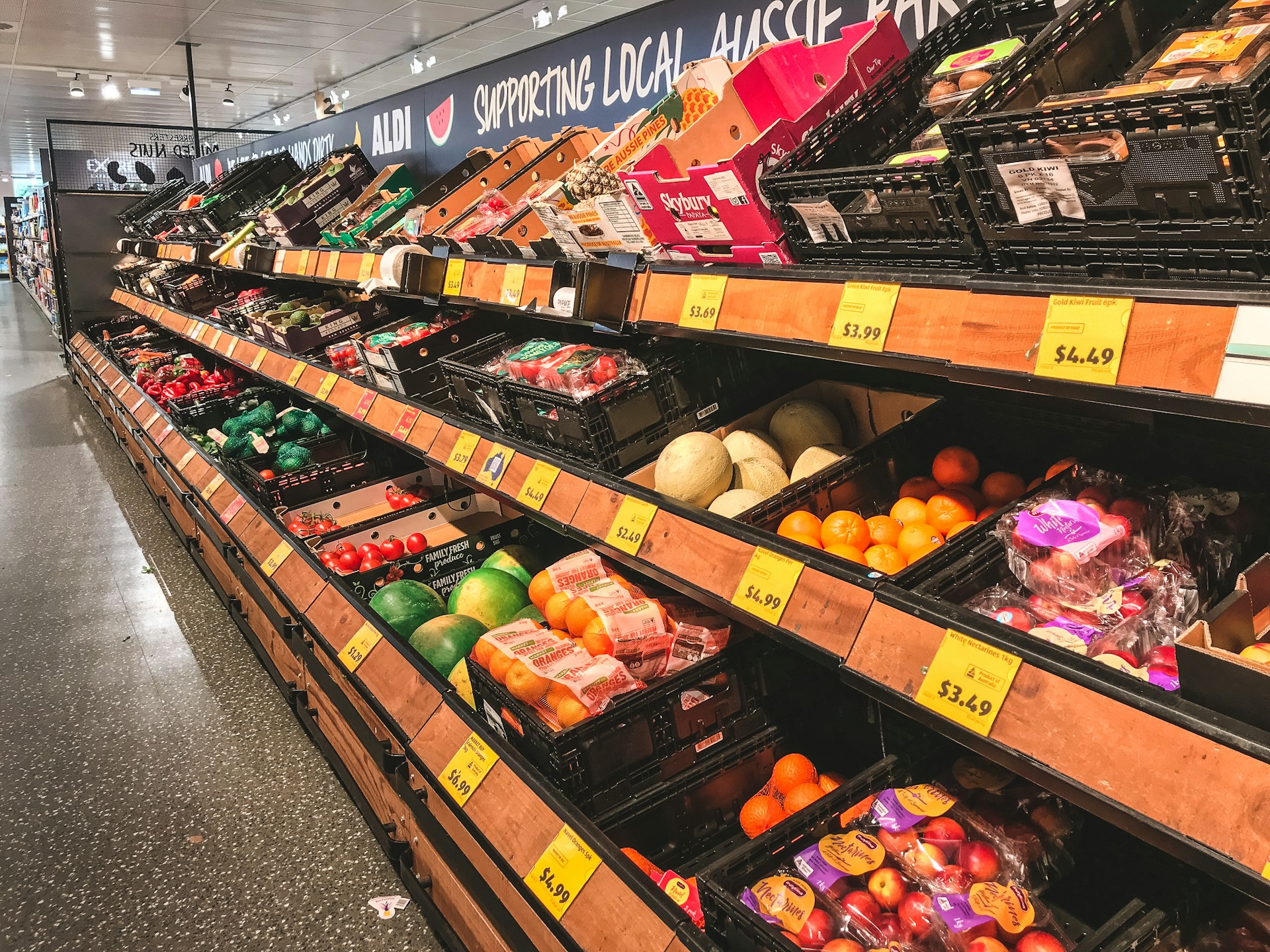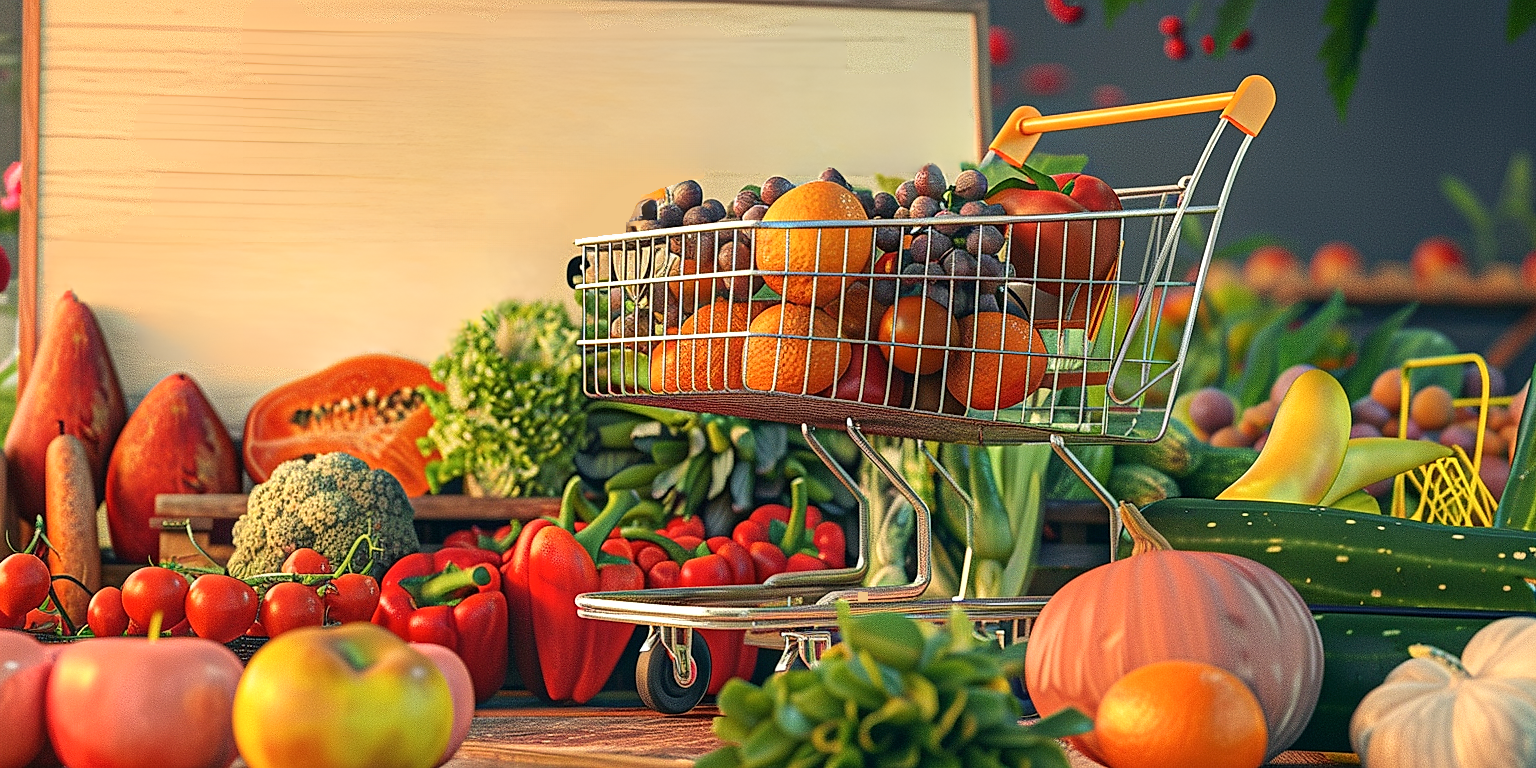In the dynamic world of agriculture business, retail markets serve as a crucial link between growers and consumers.
The increasing demand for fresh, local produce presents significant opportunities for retail market expansion.
However, without strategic planning and implementation, ambitious visions of growth can quickly give way to stagnation.
This article delves into the effective strategies which aid in expanding your produce retail market footprint.
From optimizing supply chains to leveraging digital platforms, we will explore an assortment of techniques tailored towards fostering business development and sustainability.
Armed with the information gathered here, retailers can anticipate, navigate, and capitalize on market trends to propel their business to new heights.
Contents
- Strategies For Expanding Your Produce Retail Market
- 1. Cultivate Relationships with Local Farmers and Growers
- 2. Introduce Unusual or Exotic Fruits and Vegetables
- 3. Offer Weekly or Monthly Produce Subscription Boxes
- 4. Organize produce-tasting events in-store
- 5. Implement loyalty rewards programs.
- 6. Promote Seasonal Produce with Special Offers.
- 7. Collaborate with Chefs for Recipe Recommendations
- The Bottom Line
Strategies For Expanding Your Produce Retail Market
1. Cultivate Relationships with Local Farmers and Growers
Establishing strong relationships with local farmers and growers forms the cornerstone of expanding your produce retail market.
This not only ensures a steady stream of fresh produce, but also reinforces a sense of community and supports the local economy.
To cultivate these relationships, personal interaction and understanding their needs and challenges are key.
Begin by visiting their farms and observing their processes, spend time learning about their products and the work that goes into producing them.
This firsthand experience makes you an informed retailer, equipped with the knowledge to promote their produce effectively.
By understanding the journey of the produce, you are able to provide an authentic story to your customers that enhance the value of your products.
Furthermore, regular interactions will allow you to forecast farming trends and prepare for fluctuations in the quantity and variety of available produce.
Beyond product procurement, you can leverage these relationships for potential joint marketing efforts, such as farmer spotlights in store or online, promotional videos, and social media features.
This not only builds the farmers’ brand awareness, but also increases company credibility by demonstrating commitment to local agriculture.
Another key aspect of nurturing these relationships is to provide fair and consistent payments to your farmers.
This shows respect for their work, improves their livelihoods, and can create a dedicated farmer network willing to supply your outlet with premium produce.
A mutual sense of trust and commitment helps in navigating unpredictable hurdles in farming and retailing produce, such as weather changes or crop diseases.
Remember that cultivating these relationships is not a one-time effort but a continuous process, requiring regular and open communication channels with your farmers.
To facilitate this, consider implementing a CRM (Customer Relationship Management) system specifically geared towards supplier relationships.
This system can track interactions, record payments, and highlight potential opportunities for collaboration.
By cultivating relationships with local farmers and growers, you’re taking the first crucial step in expanding your produce retail market.
2. Introduce Unusual or Exotic Fruits and Vegetables
As a produce retailer, to stand out from your competition, one potential strategy consists of expanding your offerings to include unusual or exotic fruits and vegetables.
Not only can these unique items interest consumers, but they can also give your business a distinctive edge in the overall market.
Depending on geographical, seasonal, and accessibility factors, what’s considered exotic could vary widely.
In the context of a typical American grocery store, fruits such as dragon fruit, durian, or rambutan might be considered exotic.
By introducing these unusual types of fruits and vegetables, you can attract a broad range of customers, such as international residents and adventurous foodies, thereby enhancing your customer base.
This is a step in the growth of your business that requires intelligent planning and effective implementation.
Market research is crucial to determine which exotic fruits and vegetables to introduce.
You need to analyze both the local consumer behavior and the latest food trends.
Knowing about the nutritional benefits and unique tastes of these exotic products could also help in marketing them effectively.
Once deciding on what to introduce, it would be strategic to start on a small scale, test the market response, and then modify your portfolio based on the sales and feedback.
Proper storage and handling of such items are of paramount importance since they might require certain specific conditions to maintain their freshness and quality.
Moreover, it is essential to train your staff regarding these new products so that they can convey the necessary information to the customers.
Innovation can be a driving force for growth in this industry and investing in unusual offerings can open up several untapped opportunities.
This includes not only increasing your customer base but also the possibility of higher markup prices for these unique items.
By adding exotic fruits and vegetables to your offerings, you add diversity and stand apart in the retail market, reflecting your brand’s innovative character.
3. Offer Weekly or Monthly Produce Subscription Boxes
In an increasingly digital world, subscription boxes are a popular trend that looms large over the market.
They provide a convenient, customizable, and sometimes even a surprising way for consumers to explore new products or enjoy their favorite ones on a regular basis.
When it comes to the produce retail market, a weekly or monthly produce subscription box can be a game-changer.
Not only can it increase your sales, but it also has multiple benefits from a marketing standpoint.
Subscription boxes are a form of recurring revenue, making your income more predictable and your business more stable.
In addition, they provide an excellent opportunity to introduce new or exotic fruits and vegetables to your customers, helping to increase their culinary repertoire and your sales.
Offering a weekly or monthly produce subscription box can be an excellent strategy to expand your produce retail market and attract a loyal customer base.
With a subscription box, customers sign up for regular deliveries of fresh, locally-grown produce right to their doorstep, saving them the trouble of shopping and offering an opportunity to try new and seasonal produce.
Convenient, customizable and regularly refreshing, subscription boxes offer a delightful customer experience that can lead to customer loyalty and regular, ongoing business.
Customers are also more willing to purchase a subscription box when they know it contains high-quality, local produce.
Being local implies that the fruit and vegetables are fresher, healthier, and more sustainable, leading to the increase in customer satisfaction and retention rate.
Another significant advantage of subscription boxes is that they can be tailored to customer preferences.
By incorporating flexibility and options in your subscription boxes, like allowing customers to choose their preferred fruits or vegetables, catering for specific dietary requirements, or offering upsell options, you can significantly enhance the value proposition of your produce subscription boxes.
To sum up, offering a weekly or monthly produce subscription box can be an excellent strategy to expand your produce retail market and attract a loyal customer base.
It leverages on the growing trend of online shopping and home delivery, combined with a strong focus on health, convenience, and sustainability.
4. Organize produce-tasting events in-store
One of the most interactive ways of enhancing customer awareness of your produce offerings is by organizing regular produce-tasting events in your store.
This strategy not only allows customers to try before they buy, but also introduces them to new fruits and vegetables they may have otherwise overlooked.
Planning such events requires careful consideration, ensuring that you showcase a diverse range of produce and provide sufficient information about each item.
In-store tastings can significantly increase footfall in the store and stimulate impulse purchases.
By partnering with local farmers during these events, you add an element of storytelling to the produce, making it more enticing for customers.
This strategy also provides an opportunity to engage with customers on a personal level, strengthening customer relationships and loyalty.
Additionally, such events can also encourage customers to explore other areas of the store they might not otherwise visit.
Tasting events are a form of experiential marketing that allows customers to engage with your produce in a meaningful way.
Provide recipe cards or cooking suggestions alongside the tasting samples to encourage further exploration and experimentation with the produce.
It is also important to train your staff to answer any questions and provide useful information about the produce during these events.
A well-executed tasting event should leave customers feeling educated and inspired, increasing the likelihood of repeat visits and diverse purchases.
Furthermore, you can consider pairing the tastings with other promotions or loyalty rewards to increase the overall value proposition for the customers.
Produce tasting events can also be a good opportunity to promote organic and locally-sourced products, furthering your brand’s commitment to sustainable practices.
Utilizing social media platforms to advertise these events will not only increase attendance but also enhance your store’s visibility and reach.
Remember, the aim of these events is not just to sell the produce, but to provide a memorable experience for your customers, making your store their preferred choice.
5. Implement loyalty rewards programs.
Implementing a loyalty rewards program can have a profound impact on expanding your retail market, especially in the produce sector.
Reward programs encourage repeated patronage from customers, fostering a loyalty that translates into consistent sales.
Reward programs are a tried and tested strategy, and their efficacy in retail markets can significantly contribute to the success of a produce business.
In the context of a produce retail market, such a program might reward customers by offering discounts, free items, or exclusive offers based on the frequency of purchase.
The program might also be paired with a point-based system where customers earn points for every purchase, which can later be redeemed for rewards.
And the best part is, these programs can be customized to your unique business model and target market.
For instance, if organic produce is a huge part of your retail, the program could offer higher rewards for the purchase of organic items.
Another way to maximize the potential of a rewards program is by implementing tiers.
Customers at higher tiers, who make more frequent purchases, would receive better rewards, incentivizing them to buy more.
The success of a rewards program is also largely dependent on its visibility and ease of understanding.
Customers should not have trouble understanding how the program works, or accessing their rewards, and this can be facilitated with clear communication through various channels like in-store signs, emails, or the business’s website.
Another crucial aspect is ensuring that the program is easy to join and use.
Make it simple for your customers to enroll, whether it’s through an app, a website, or at the checkout counter in your physical store.
Furthermore, a rewards program offers a great opportunity for data collection, which can provide invaluable insights into customer behavior and preferences.
This data can in turn be leveraged for targeted marketing campaigns, helping to further drive customer loyalty and expand your produce retail market.
6. Promote Seasonal Produce with Special Offers.
As a crucial component in expanding your produce retail market, promoting seasonal produce with special offers can be significantly rewarding.
You can leverage the natural supply and demand cycle that comes with each season’s unique produce.
By taking advantage of the abundance of specific fruits and vegetables during their peak season, you can offer competitive pricing to attract more customers to your store.
For instance, summer months might see an abundance of stone fruits and berries, so it would be strategic to offer special deals on these items.
On the other hand, winter could be a great time to promote root vegetables and squashes with enticing prices.
Getting creative with your seasonal promotions can make your retail store’s produce offerings stand out from the competition.
It is important to not only communicate the discounted prices but also the quality and freshness of your seasonal produce.
Shoppers will appreciate the value that comes with buying in-season – getting the best quality produce for the most affordable price.
You could attract your customers’ attention by using colorful signs emphasizing the special seasonal offers and the benefits of consuming in-season produce.
Special offers could also be packaged creatively, for instance, in the form of ‘buy one get one free’, ‘buy two get one half-price’ or even discounts on items bought in bulk.
Promoting seasonal produce with special offers not only brings in more customers but also increases the sales volume of the in-season produce.
Moreover, this strategy contributes to faster turnover rates which can lead to less waste, making your store more sustainable.
To further enhance this strategy, consider pairing it with a loyalty rewards program that encourages customers to return to your store.
The increased traffic from your promotions can spill over to your other product offerings, improving business on the overall.
The sale of other goods in your store could also get a boost due to the greater amount of foot traffic.
While implementing special offers for seasonal produce, always be mindful to strike a balance where the customers feel they are getting a great deal, and the retail store still makes a reasonable profit.
7. Collaborate with Chefs for Recipe Recommendations
One crucial strategy in expanding your produce retail market involves partnering with chefs for recipe recommendations.
Why chefs? Well, chefs spend the majority of their time working around food; they understand flavors, textures, and culinary techniques more than anyone.
When they create a recipe that includes your produce, they’re not just sharing a meal idea; they’re effectively endorsing your products and emphasizing their quality.
Teaming up with chefs can take your produce retail business to new levels of success by magnifying its exposure and augmenting its reputation for quality.
But how do you go about fostering these collaborations?
Start by reaching out to local chefs who share your passion for fresh, high-quality ingredients.
Invite them over to your store, or even better, your supplier’s farm.
Let them witness first-hand the time, effort, and care that goes into cultivating your produce.
Next, propose that they devise unique, tantalizing recipes using your produce, which you can then share with your shoppers.
Your customers will appreciate the expert guidance in using your products, and it will incentivize purchases for them.
This arrangement is equally beneficial for chefs – it provides them with a platform to showcase their talent and allows them to connect with potential clients.
To maximize the positive impact of this collaboration, consider hosting live cooking demonstrations within your store.
Not only does this create an exciting, engaging shopping experience, but it also lets customers witness firsthand the transformation your produce undergoes from farm to fork, reinforcing its quality and appeal.
Further, you can also publish these recipes online, across your social media platforms and website.
This increases your business’s visibility and entices a wider audience of potential customers, thus effectively expanding your retail market.
Building such partnerships with chefs and nurturing culinary creativity can undoubtedly usher in a new wave of customers, growth, and ongoing success for your produce retail business.
The Bottom Line
The importance of modernizing your grocery store with innovative tactics cannot be overstressed in order to survive in today’s competitive marketplace.
Cultivating relationships with local farmers and introducing unique fruits and vegetables enhances the produce mix while portraying a commitment to community and quality.
Subscription boxes combine convenience and interest, while in-store tasting events and loyalty rewards programs create an engaging, customer-centric shopping experience.
Seasonal promotions showcase variety and freshness, and collaborations with chefs offer customers value-added inspiration for using the store’s products.
These strategies not only advance the modern grocery store’s mission of offering fresh, quality items and an enriching shopping experience, but also reinforce the store’s role as a hub for healthy, creative eating and community connections.




